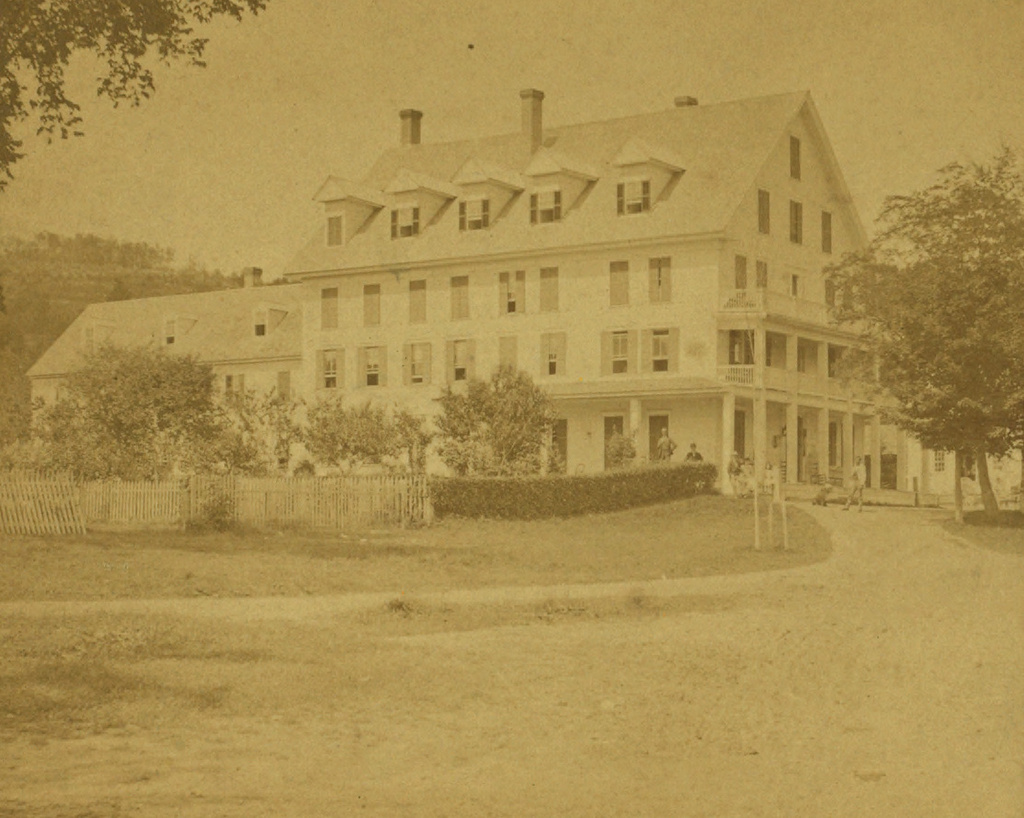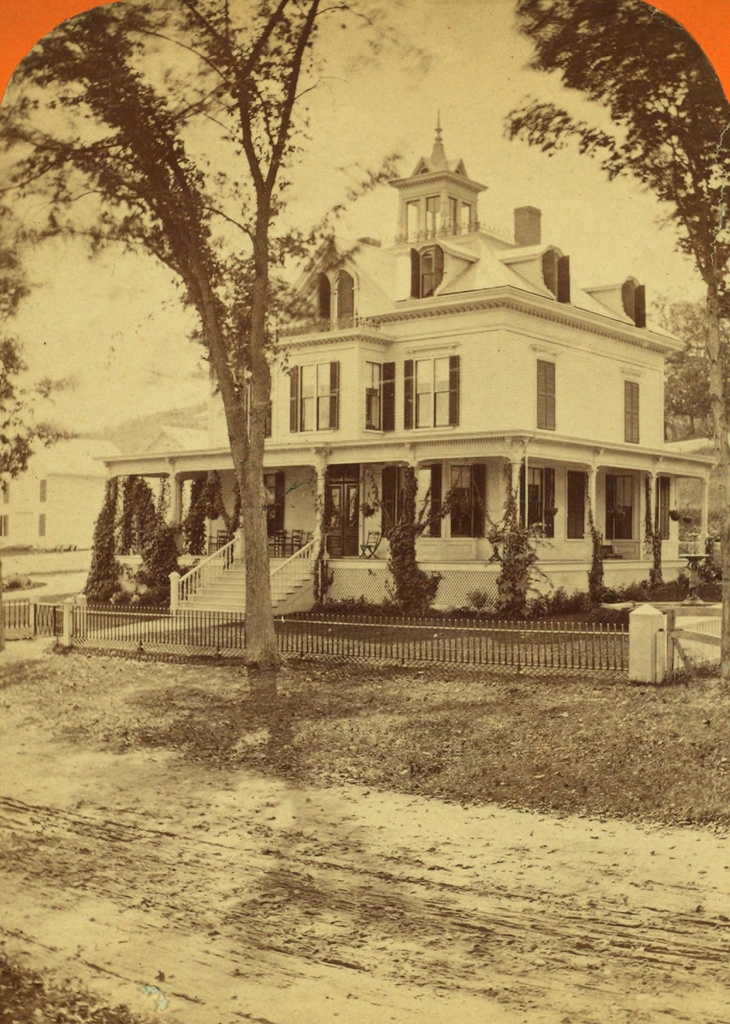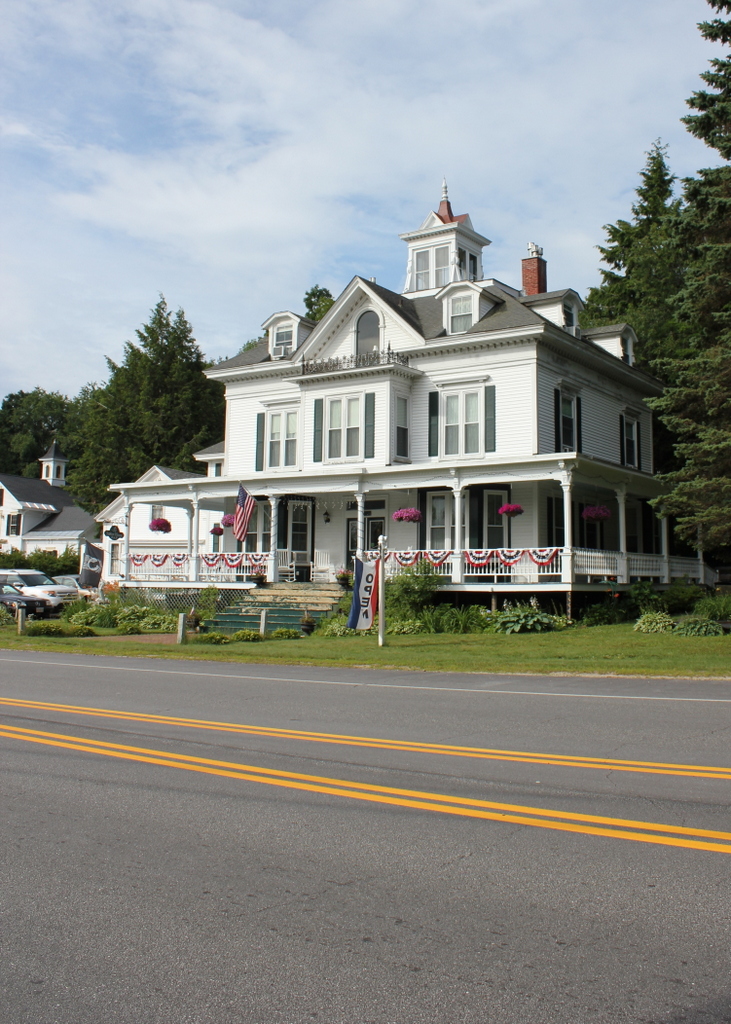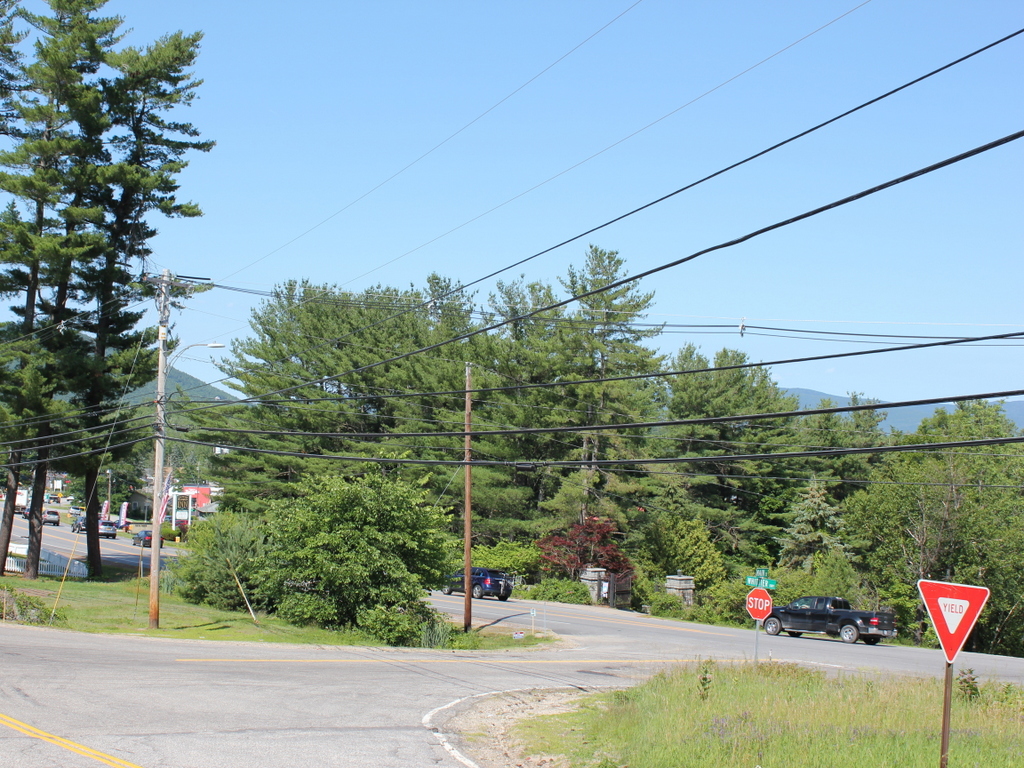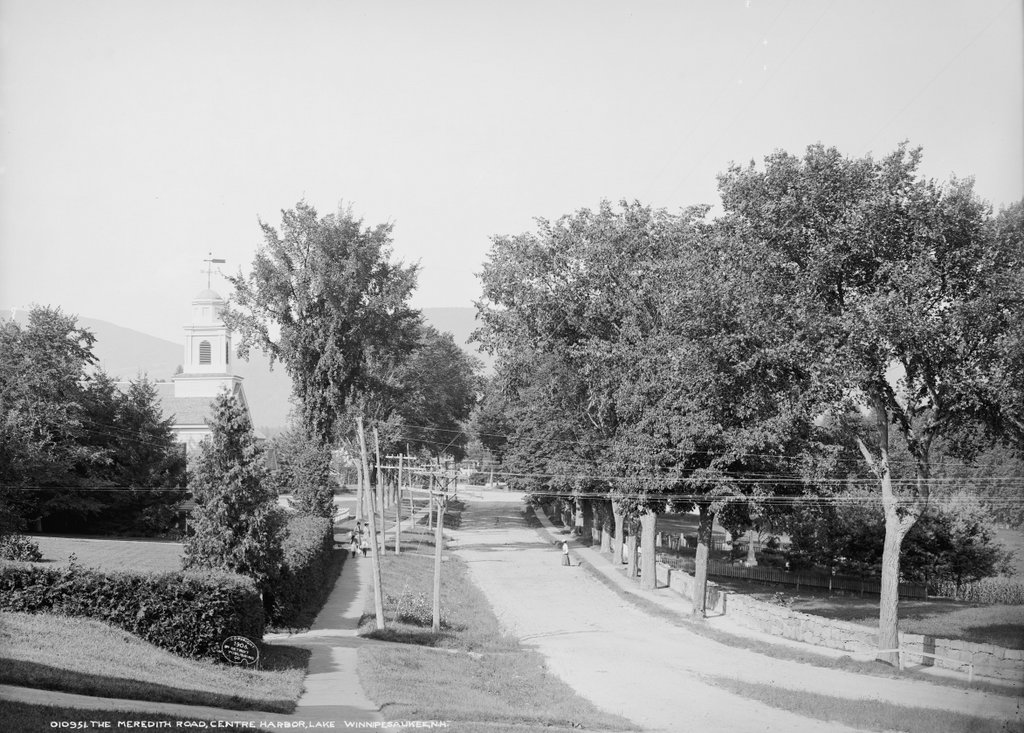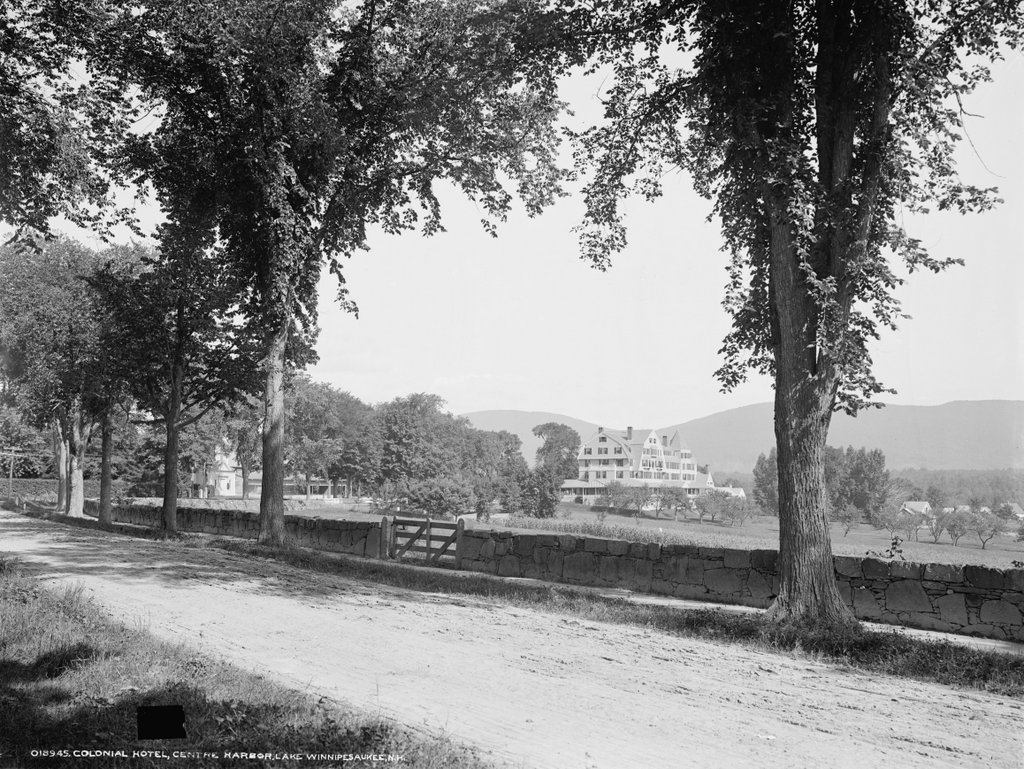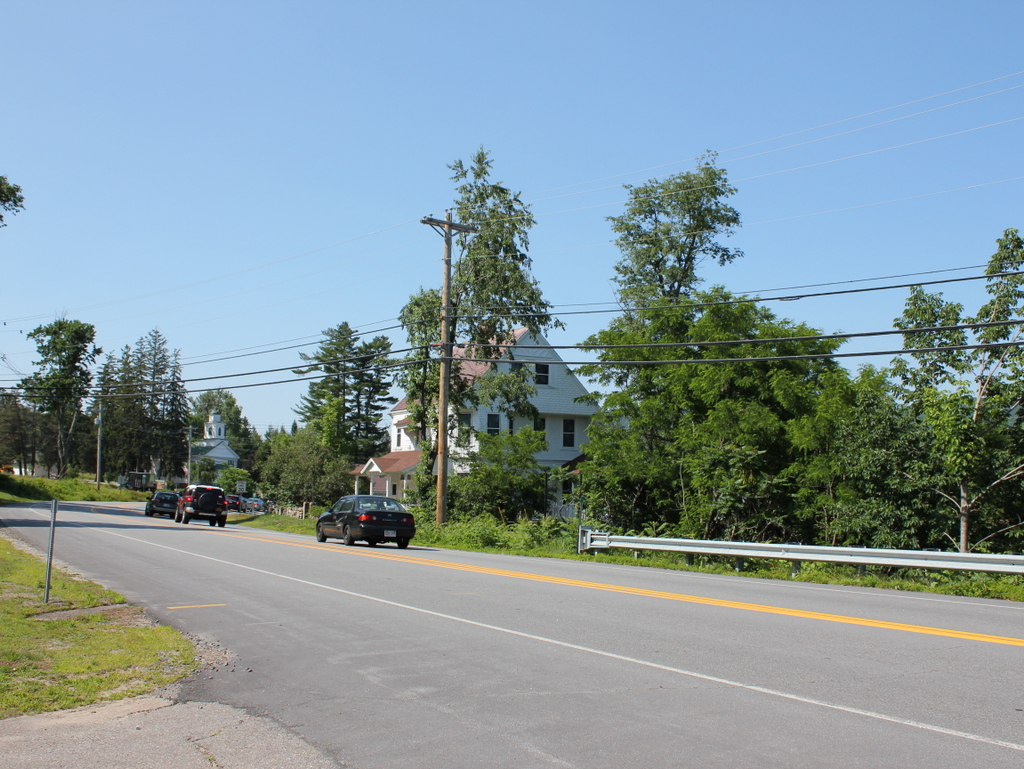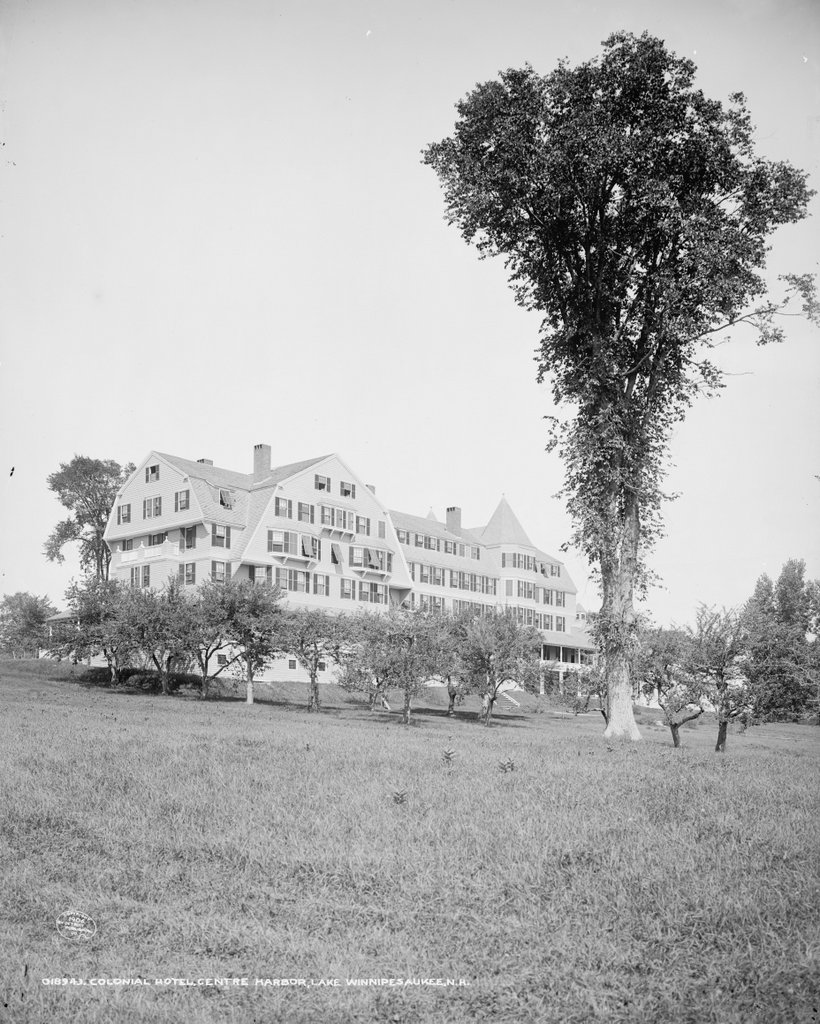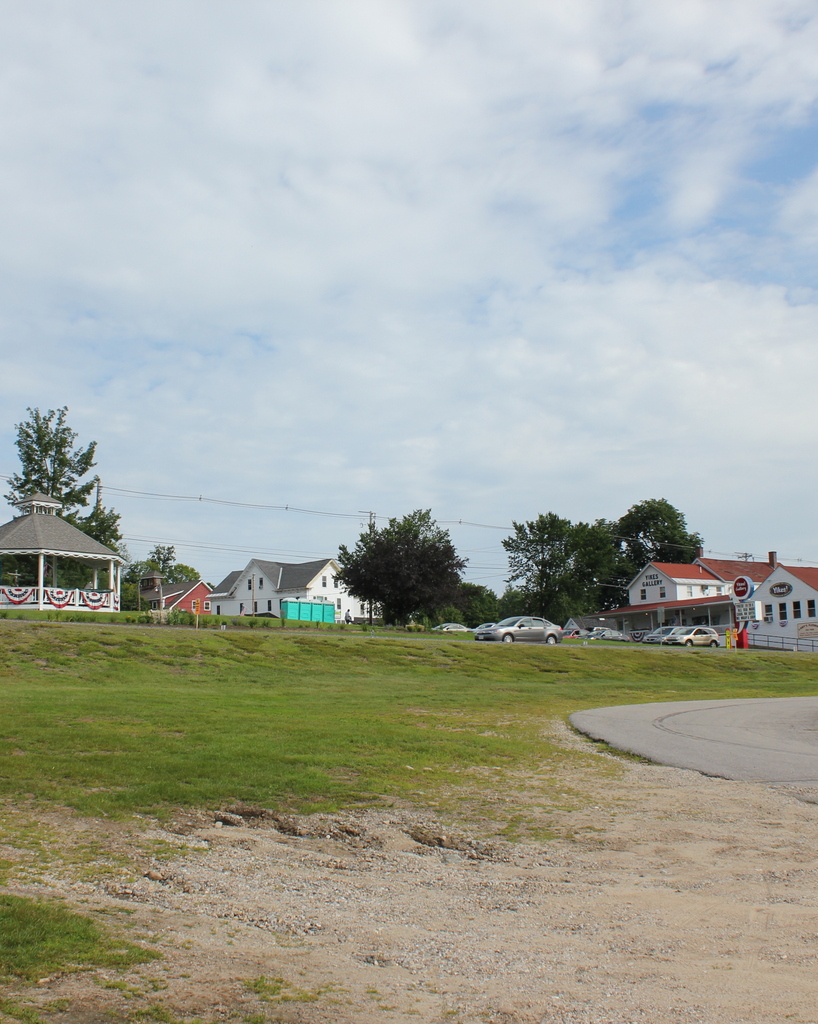The Moulton House on present-day Dane Road in Center Harbor, around 1872. Image courtesy of the New York Public Library.
The site in 2015:
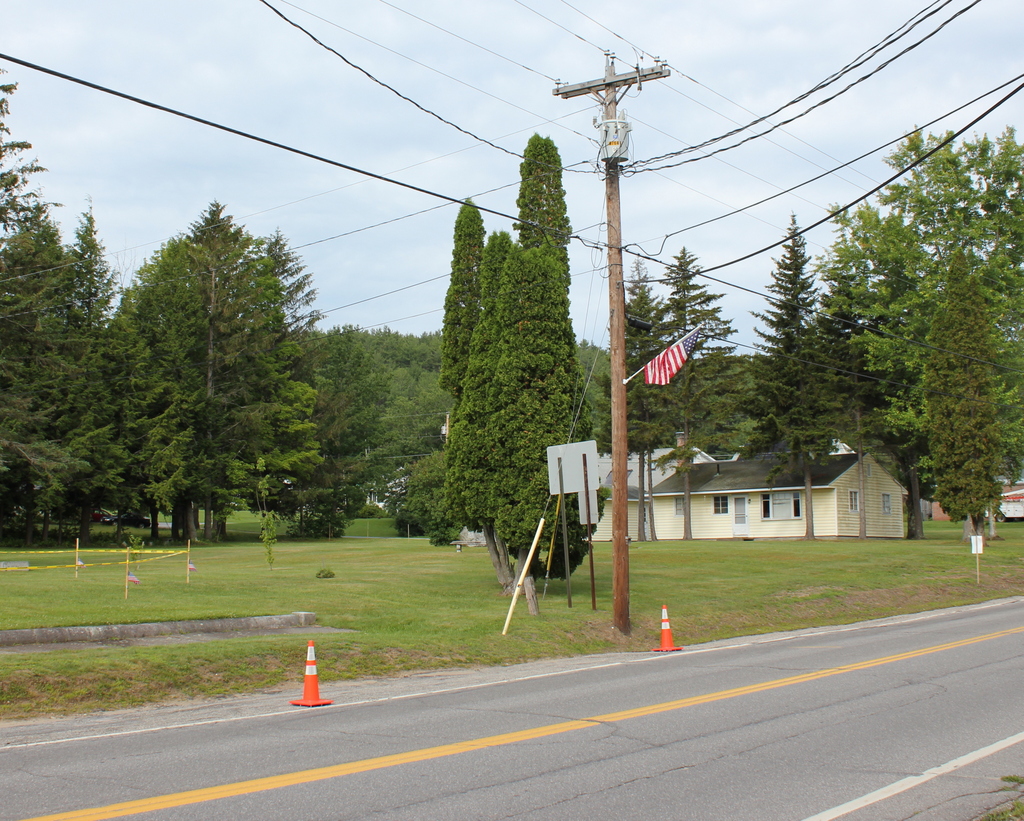
I couldn’t find much about the Moulton House aside from some basic information in late 19th century guidebooks of the area. It was built sometime prior to the Civil War, and was expanded in 1868. As mentioned in this post, it was located directly behind the old Senter House, and according to an 1876 guide book could house 75 guests at $3 per day, or $12 to $20 per week. The hotel clearly played second fiddle to the larger Senter House, which was later renamed the Colonial Hotel. Although the rates were a dollar more per day in 1876, it offered far more amenities for guests, including beautiful views of Lake Winnipesaukee and the surrounding landscape. Much of the Moulton House’s view of the lake was blocked by, of course, the Senter House.
Although literally overshadowed by the Senter House, the Moulton House was often mentioned in guidebooks as a good option for long-term visits. An 1868 guide mentions that it “is of smaller dimensions, yet is a pleasant house for those who wish to board and spend some time in the vicinity.” Given Center Harbor’s 19th century transportation connections,”the vicinity” meant more than just the tiny village; from here, guests could board a steamboat for Wolfeboro, Alton Bay, or Weirs Beach, or a stagecoach to Moultonborough, South Tamworth, or West Ossipee.
I don’t know what happened to the Moulton House, although it is entirely possible that, like so many of its contemporaries, it burned down. It appears in the Automobile Blue Book as late as 1910, with an advertisement, directly underneath that of the Colonial Hotel, which describes it as “In the foothills of the White Mountains and at the head of beautiful Lake Winnipesaukee. First-class house with modern conveniences. Table supplied with the best the market affords. Excellent service. Large airy rooms. Sanitary plumbing. Baths. Electric lights. Season, May to October, inclusive.” The Colonial Hotel burned down 9 years later, and at some point the Moulton House was also lost to history.

